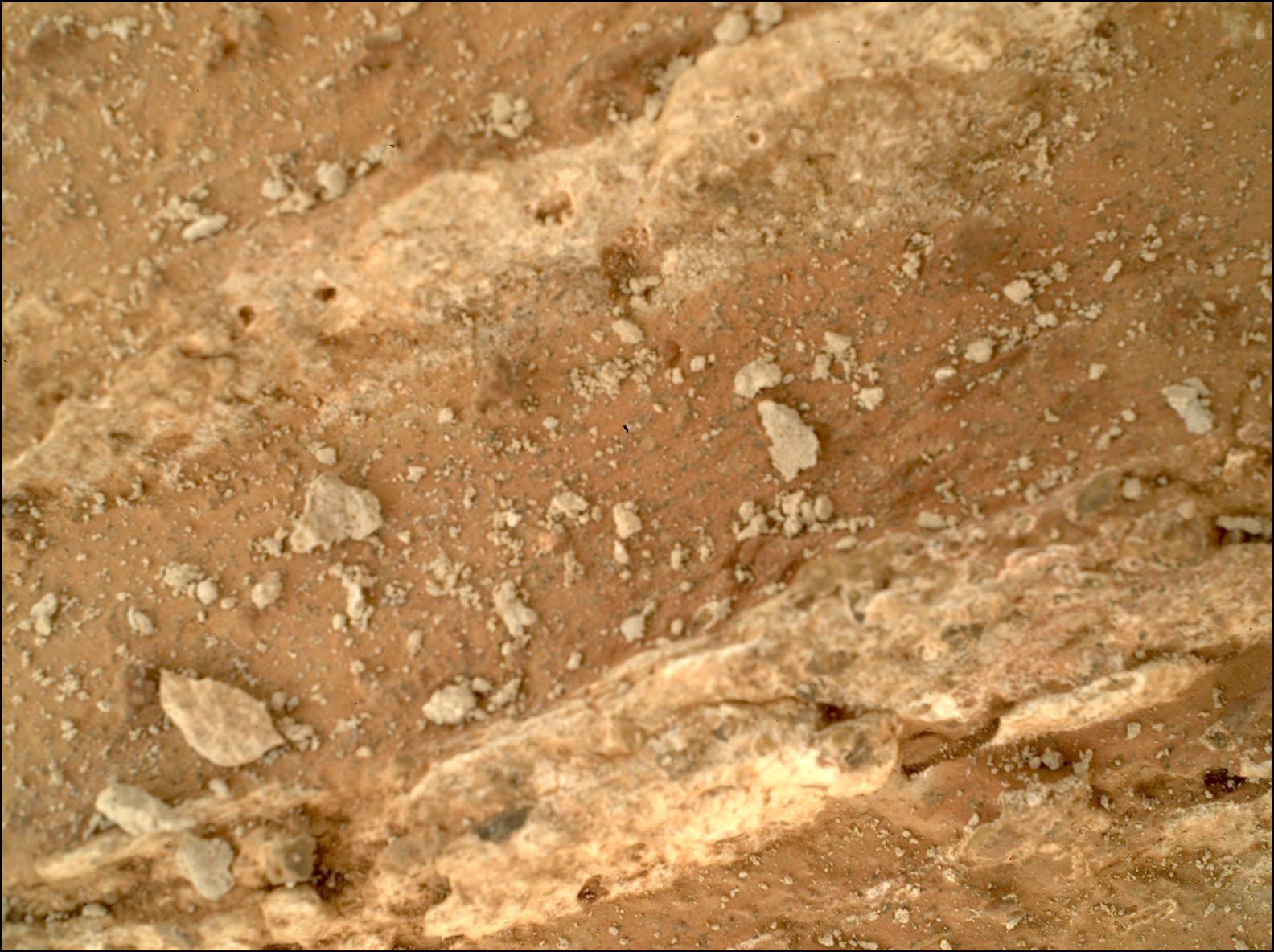Perseverance Matters
2 min read
Perseverance Matters
In January 2024, the SHERLOC instrument aboard NASA’s Mars 2020 Perseverance rover encountered a significant issue. A fault in the instrument’s motor caused the dust cover and autofocus mechanism to become inoperative, putting the rover’s SHERLOC Raman spectroscopy capability at risk.
Although Mars had posed an unexpected challenge, members of the SHERLOC operations team working together with the rover engineers refused to give up.
Fortunately, a motion of the arm on Sol 1077, almost exactly two months after the original issue occurred, resulted in the dust cover moving to a nearly fully open position. As a result, the team began to look for ways to focus the optics and operate SHERLOC with the dust cover in this open position. These efforts involved many trials and errors, several rounds of diagnostic examinations, analyses, and troubleshooting around the clock.
And as they say, “It does not matter how slowly you go so long as you do not stop”.
After much hard work and persistence, the team successfully brought the SHERLOC instrument back online in June 2024 with a successful observation of the rock target Walhalla Glades. It was just the start of an exciting summer for SHERLOC.
In July 2024, SHERLOC’s Raman capability, whose destiny was uncertain a month ago, performed multiple calibrations, scans, and observations on a rock named “Cheyava Falls” and the team was thrilled to discover the mission’s most compelling evidence for organics in the Jezero crater. Organic compounds can be formed through biological or non-biological processes and the organics that SHERLOC observed in Cheyava Falls would need to be studied in laboratories here on Earth for their origin to be determined. Regardless of how they formed, the Cheyava Falls organics could tell us a great deal about the Red Planet’s past and present carbon inventory, a possible early carbon cycle, and the precursor conditions to life as we know it.
It is an important and exciting juncture in Mars exploration and astrobiology. This year, the SHERLOC instrument beat the odds and made one of the most exciting discoveries of the Mars 2020 mission. As the mission encounters and overcomes problems like that experienced by SHERLOC, we find that exploring Mars can also lead to discovering the team’s persistence and Perseverance.
Written by Anushree Srivastava, Postdoctoral Fellow at Carnegie Institution. Member of Mars 2020 SHERLOC Science and Operations Team







